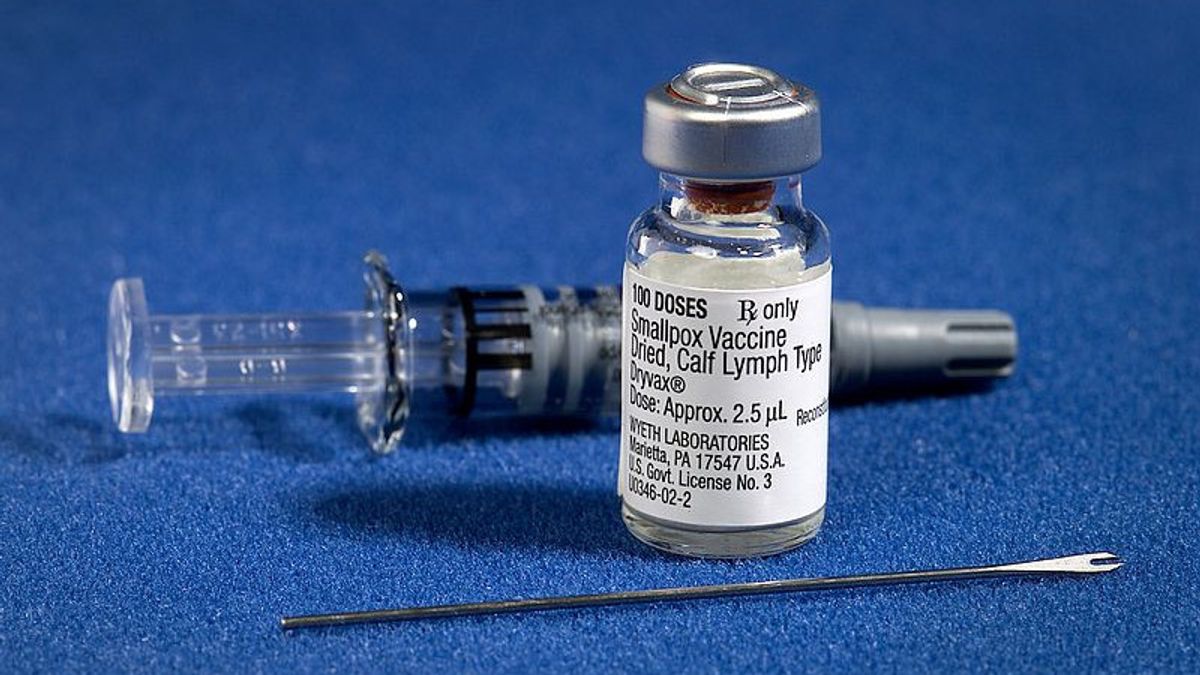
JAKARTA - As the world faces the COVID-19 pandemic, there is a lot of talk about requiring people to have "vaccine passports" before going abroad or to crowded events. However, this is actually not the first time.
Before its eradication in the 20th century, having smallpox marks could be the difference between getting a job or not. Quoting The Vintage News, smallpox was once the most feared disease in the world.
Before smallpox is eradicated through vaccination, it can be a deadly disease. Estimates show that in the 18th century, Europe lost 400,000 people a year to smallpox.
At its peak, a third of people were diagnosed blind due to the development of smallpox infection. Early symptoms of smallpox include fever, vomiting, and joint pain, followed by a skin rash. The rash will turn into blisters, which will eventually peel off, and when the blisters dry up it will peel off and leave scars.
Development of smallpox vaccineAt that time, there was a belief that milkers had a beautiful appearance. In addition, dairy farmers and their families often do not contract smallpox during outbreaks.
This fact attracted the interest of a doctor named Edward Jenner. He theorizes that because farmers and milkers regularly contract cow pox, this may protect them from smallpox.
This theory led Jenner, in 1796, to experiment with the first vaccinations. The idea of inoculation is nothing new.
Some people used to rub coins on infected people then attach them to small wounds in healthy children in the hope they would contract smallpox and recover. But Jenner took a different approach.
He accidentally infects a person with cow pox, a disease with much milder symptoms. Then, once they recovered, Jenner again got them human pox.
His experiment proved successful and he referred to the next process as "vaccination" derived from "vacca," Latin for cow.
Smallpox scarsIf a person has smallpox and recovers, it is most likely that he will have scars all over the body. For those in high-end societies where beauty is important, this can be a terrible consequence.
However, for those in the working class, this scar could be the key to getting a job. If an employer has never suffered from smallpox, they will most likely hire someone who has smallpox scars because it indicates that they have recovered from the disease.
As a result, they will not be infected with smallpox and will not infect their superiors. In some cases, employers are looking for workers who also have vaccine scars.
Smallpox vaccination at the time left an incision in the skin of the upper arm as it infected the wound with the live cow pox virus. After vaccination, it is most likely that the patient will only experience nausea and fever.
Therefore, it is possible to know if a person has been vaccinated for the disease by examining the scars on their arms. With the outbreak so widespread, the most affected cities and states began demanding vaccinations.
An official vaccination certificate must be presented for daily tasks such as leaving for work or school. When some people began falsifying certificates, government officials instead requested that the vaccination scars be considered evidence.
This policy is carried out not only in many cities and states, but even with private companies. In 1903, Henry Clay Frick ordered everyone working at his steel mill to prove that they and their families had been vaccinated.
Just like people who try to fake vaccination certificates, they are now also trying to fake vaccination marks. This is not pleasant considering that they use nitric acid on the skin to produce similar scars.
A comprehensive vaccination program led to the last diagnosed case of smallpox occurring in October 1977. Then the World Health Organization declared smallpox eradicated in 1980.
Other MEMORY
The English, Chinese, Japanese, Arabic, and French versions are automatically generated by the AI. So there may still be inaccuracies in translating, please always see Indonesian as our main language. (system supported by DigitalSiber.id)









